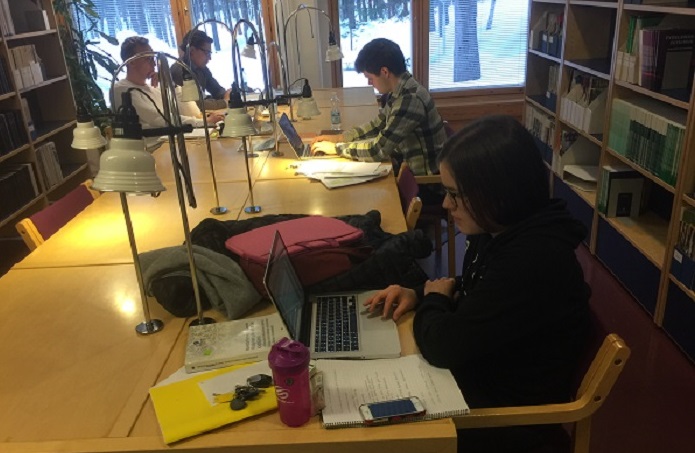More students with foreign background studying at higher Insts
Published : 29 Jun 2023, 03:27
Updated : 29 Jun 2023, 03:32
The number of students with an immigrant or foreign background studying at Finnish higher education institutions has increased significantly, having more than doubled between 2010 and 2020, said a report published by the Finnish National Agency for Education.
The customer numbers of guidance services intended to support the higher education and employment of people born outside of Finland have also increased significantly in recent years, said the agency in a press release on Wednesday.
The significant increase in the number of new students with an immigrant or foreign background admitted to higher education in Finland is reflected in students' nationalities, for example: in 2010, the number of students in Finnish higher education institutions who were not Finnish citizens was 8,500, whereas in 2022 the number was approximately 17,500.
The number of students born abroad was just over 12,800 at the start of the report period and just over 26,400 at the end of it; during the same period, the number of foreign-language students, meaning students whose native language is something other than Finnish, Swedish or Sámi, increased from approximately 11,000 to over 26,000.
Since 2016, some of Finland’s higher education institutions have been providing SIMHE (Supporting Immigrants in Higher Education in Finland) guidance services with funding from the Ministry of Education and Culture.
The purpose of these services it to facilitate migrants’ access to higher education, completion of degrees and employment in the Finnish labour market. The services can be utilised by highly educated immigrants hoping to enter higher education in Finland: for example, the services have helped many people who fled Ukraine due to the war to enter higher education or find employment in Finland.
Demand for SIMHE services has been growing sharply in recent years: in 2021, the services were utilised by approximately 1,000 customers, which is double the number of customers who utilised them in 2017.
In 2022, the number of customers was over 2,700. SIMHE services are provided by the universities of Helsinki, Jyväskylä, Turku and Vaasa, the Tampere University Community, Arcada University of Applied Sciences, Karelia University of Applied Sciences, Metropolia University of Applied Sciences, Savonia University of Applied Sciences and Oulu University of Applied Sciences. The Finnish National Agency for Education supports the services in a specialist capacity.
The report by the Finnish National Agency for Education examines the results and effectiveness of SIMHE services based on statistics extending up to 2021 and university-specific reviews. SIMHE services include various training, advisory and guidance services supporting access to higher education and employment as well as measures supporting integration.
The objective is to develop higher education so that it is equally accessible to different population groups. To this end, SIMHE services have included the development and creation of models for better identifying and recognising the prior learning of people with an immigrant or foreign background. The lessons learned and practices established during the services have also served as a basis for developing preparatory education and training.
According to the report, the majority of SIMHE guidance carried out in 2021 consisted of individual guidance. The educational background of the customers varies significantly, as does their age and the amount of time they have been living in Finland. The most typical customer of SIMHE services has been an unemployed woman between the ages of 30 and 39.
SIMHE services have been used in nearly all regions of Finland, but approximately two thirds of customers have been from Uusimaa. Customers have most often been advised to participate in open university of applied sciences studies and various language programmes and courses and slightly less often to participate in open university studies, to register as a jobseeker at the TE Office or to apply for a degree programme at a university or university of applied sciences.
The sharp increase in the number of people using SIMHE services in 2022 can be explained by the fact that the Ministry of Education and Culture allocated separate funding to higher education institutions for the further education and employment of highly educated Ukrainians fleeing the war.
The Finnish higher education institutions offering SIMHE services were able to agilely respond to the needs that arose in Finland as a result of the Russian invasion of Ukraine. The higher education institutions proceeded to create new operating methods and services tailored to Ukrainians.


